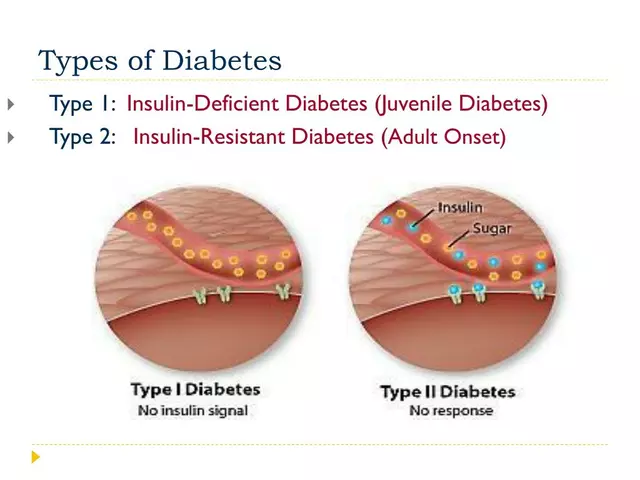
Delayed Medication Side Effect Risk Checker
Check Medication Safety Risk
When a patient suddenly develops a rash, joint pain, or even life‑threatening swelling months after starting a medication, the connection isn’t always obvious. Those are the classic moments when delayed medication side effects reveal themselves, often after a long stretch of uneventful use. This guide walks you through the why, how, and what‑to‑do so you can catch these late‑onset reactions before they turn serious.
What Counts as a Delayed Medication Side Effect?
In clinical terms, delayed medication side effects-or late‑onset adverse drug reactions (ADRs)-are harmful responses that surface hours, days, weeks, or even years after a drug is started. Unlike immediate reactions that appear within minutes, these ADRs hide behind a temporal gap, making the culprit hard to spot.
Delayed medication side effects are defined as unwanted drug‑induced events that manifest after 72 hours of exposure, often after a period of apparent safety. The World Health Organization estimates that about 5 % of all hospital admissions involve ADRs, with roughly 35 % of those being delayed reactions.
Common Types and Their Timing Patterns
Understanding the typical timeline helps triage symptoms. Here are the most frequently encountered delayed reactions:
- Type IV hypersensitivity (cell‑mediated) usually appears 48‑72 hours after exposure, but can stretch to 8 weeks.
- DRESS syndrome (Drug Reaction with Eosinophilia and Systemic Symptoms) typically emerges 2‑8 weeks after the offending drug.
- Severe Cutaneous Adverse Reactions (SCARs) such as Stevens‑Johnson Syndrome (SJS) or Toxic Epidermal Necrolysis (TEN) often present 1‑3 weeks after drug initiation.
- Organ‑specific delayed effects-like tendon rupture from fluoroquinolones-may not appear until 3‑6 months post‑therapy.
- Metabolic or skeletal complications (e.g., osteoporosis from chronic corticosteroid use) can take years to become clinically evident.
Medication Classes Most Often Linked to Delayed Reactions
Not every drug carries the same delayed‑reaction risk. The following five groups dominate the landscape:
| Drug Class | Typical Delayed Reaction | Usual Onset | Potential Severity |
|---|---|---|---|
| ACE inhibitors | Angioedema | Months‑to‑years | Life‑threatening airway obstruction |
| Fluoroquinolones | Tendon rupture, peripheral neuropathy | 3‑6 months post‑treatment | Permanent disability |
| Proton pump inhibitors (PPIs) | Vitamin B12 & magnesium deficiency, chronic kidney disease | 2‑4 years of continuous use | Fracture risk, neurologic symptoms |
| Corticosteroids | Osteoporosis, cataracts, diabetes | Years of therapy | Increased fracture & infection risk |
| Antiepileptic drugs | DRESS, Stevens‑Johnson Syndrome | 2‑6 weeks | 5‑50 % mortality depending on phenotype |

Red Flags: Symptoms That Should Prompt a Drug Review
Delayed reactions can affect almost any organ system. Keep an eye out for these patterns:
- Cutaneous clues: New rash, pustules, or severe blistering that doesn’t fit a typical allergy timeline.
- Respiratory warning: Sudden tongue or airway swelling, especially in patients on ACE inhibitors.
- Musculoskeletal signs: Unexplained tendon pain or rupture weeks after finishing a fluoroquinolone course.
- Metabolic shifts: Gradual bone loss, high blood sugar, or cataract formation in long‑term steroid users.
- Systemic involvement: Fever, eosinophilia, and organ dysfunction (liver, kidney) appearing weeks after starting an antiepileptic.
When any of these appear without a clear alternative cause, ask yourself: "Could a medication started months ago be the trigger?"
How to Diagnose a Delayed Reaction
Because the timing is vague, a systematic approach is key.
- Comprehensive medication list: Include over‑the‑counter drugs, supplements, and herbal products.
- Timeline reconstruction: Chart when each drug was started, any dose changes, and when symptoms first appeared.
- Laboratory testing: CBC with differential (look for eosinophilia), liver/kidney panels, and serum drug levels if applicable.
- Specialized tests:
- Lymphocyte transformation test (85‑90 % sensitivity for Type IV hypersensitivity).
- Skin patch testing (70‑80 % accuracy when done 4‑6 weeks after the acute event).
- Genetic screening: HLA‑B*57:01 for abacavir, HLA‑B*15:02 for carbamazepine‑induced SJS/TEN. These are becoming standard in many hospitals.
Collaboration with an allergist or clinical pharmacologist often speeds up identification.
Management Strategies Once a Delayed ADR Is Confirmed
Stopping the offending drug is the first, non‑negotiable step. Afterward, treatment depends on severity:
- Mild cutaneous reactions: Topical steroids, antihistamines, and close monitoring.
- Severe SCARs (SJS/TEN, DRESS): Hospital admission, systemic corticosteroids or IVIG, supportive care, and early ophthalmology consult.
- Musculoskeletal injuries (tendon rupture): Orthopedic evaluation, surgical repair, and rehabilitation.
- Metabolic complications: Bone density testing, vitamin supplementation, endocrinology referral.
Never re‑challenge a drug that caused a serious delayed reaction. For milder cases, cross‑reactivity must be assessed before choosing an alternative.

Prevention: Reducing the Risk of Late‑Onset Reactions
Prevention is a mix of vigilant prescribing and patient education.
- Risk assessment before prescribing: Review age, comorbidities, and known genetic markers.
- Educate patients about timelines: Explain that some side effects can appear months later and encourage them to report new symptoms.
- Regular medication reviews: At each clinic visit, reconcile the drug list and consider deprescribing when long‑term risk outweighs benefit.
- Use electronic alerts: Many EHR systems now flag high‑risk drug‑patient combos (e.g., fluoroquinolones in older adults).
- Consider prophylactic supplementation: For long‑term PPIs, check magnesium and B12 levels annually.
These steps have already cut delayed ADR hospitalizations by up to 12 % in health systems that adopted systematic review protocols.
Key Takeaways
- Delayed medication side effects can appear from days to years after drug start, often hiding behind normal use.
- Common culprits include ACE inhibitors, fluoroquinolones, PPIs, corticosteroids, and antiepileptic drugs.
- Watch for skin eruptions, unexplained swelling, tendon pain, metabolic shifts, or multi‑organ involvement.
- Diagnose by mapping drug timelines, using lab tests, and, when needed, specialized allergy testing or genetic screening.
- Prompt drug cessation, appropriate supportive care, and thorough patient education are the cornerstones of management and prevention.
Frequently Asked Questions
How long after starting a medication can a delayed side effect appear?
It varies widely-some reactions show up within 48 hours, while others, like osteoporosis from steroids, may take years. Most serious delayed hypersensitivity reactions appear between 2 weeks and 8 weeks.
Can genetic testing prevent delayed reactions?
Yes, for certain drugs. HLA‑B*57:01 testing prevents abacavir hypersensitivity, and HLA‑B*15:02 screening reduces carbamazepine‑related SJS/TEN. More panels are expected to become routine by 2025.
What should I do if I suspect a delayed reaction?
Stop the suspect drug immediately, contact your healthcare provider, and note the exact timing of symptom onset. Bring a complete medication list to your appointment.
Are over‑the‑counter supplements also a risk?
Absolutely. Supplements like calcium or herbal extracts can interact with prescription drugs and trigger delayed hypersensitivity, especially in people with prior reactions.
How common are delayed adverse reactions?
The FDA’s FAERS database recorded 2.3 million adverse events in 2022, with about 35 % classified as delayed. That translates to millions of patients worldwide each year.
Can lifestyle changes lower my risk?
Staying active, maintaining a healthy weight, and avoiding smoking reduce overall inflammation, which can lessen the severity of hypersensitivity reactions. Regular labs also catch early metabolic side effects.
Delayed medication side effects are a hidden but manageable part of modern pharmacotherapy. By staying alert to timing, symptoms, and risk factors, both patients and clinicians can intervene early, avoid serious complications, and keep treatment safe and effective.
13 Comments
Write a comment
More Articles

How Saxagliptin Affects Insulin Resistance in Type 2 Diabetes
As a blogger focused on health and wellness, I recently came across some interesting research on how Saxagliptin affects insulin resistance in Type 2 Diabetes. From what I've gathered, Saxagliptin is a medication that helps to control blood sugar levels by increasing the release of insulin and reducing the amount of glucose produced by the liver. This ultimately results in better management of Type 2 Diabetes and improved overall health. I was impressed to learn that this medication can not only help those struggling with insulin resistance but also reduce the risk of long-term complications associated with diabetes. I'm eager to continue following this topic and sharing more insights with my readers.



krishna chegireddy
October 24, 2025 AT 22:03They don’t want you to know that Big Pharma has been hiding delayed reactions for decades.
Every new pill comes with a silent clause that the worst side‑effects might show up months later.
It’s not a coincidence that the most serious cases come after the drug is assumed safe.
Think about the millions of prescriptions written without a single follow‑up question about future safety.
Trust is a luxury in an industry that profits from secrecy.
When you see a rash weeks after stopping antibiotics, ask yourself who benefits from your ignorance.
Look beyond the label, the fine print is where the truth hides.
Only a vigilant patient can catch the tricks they try to conceal.
Stay skeptical, stay alive.